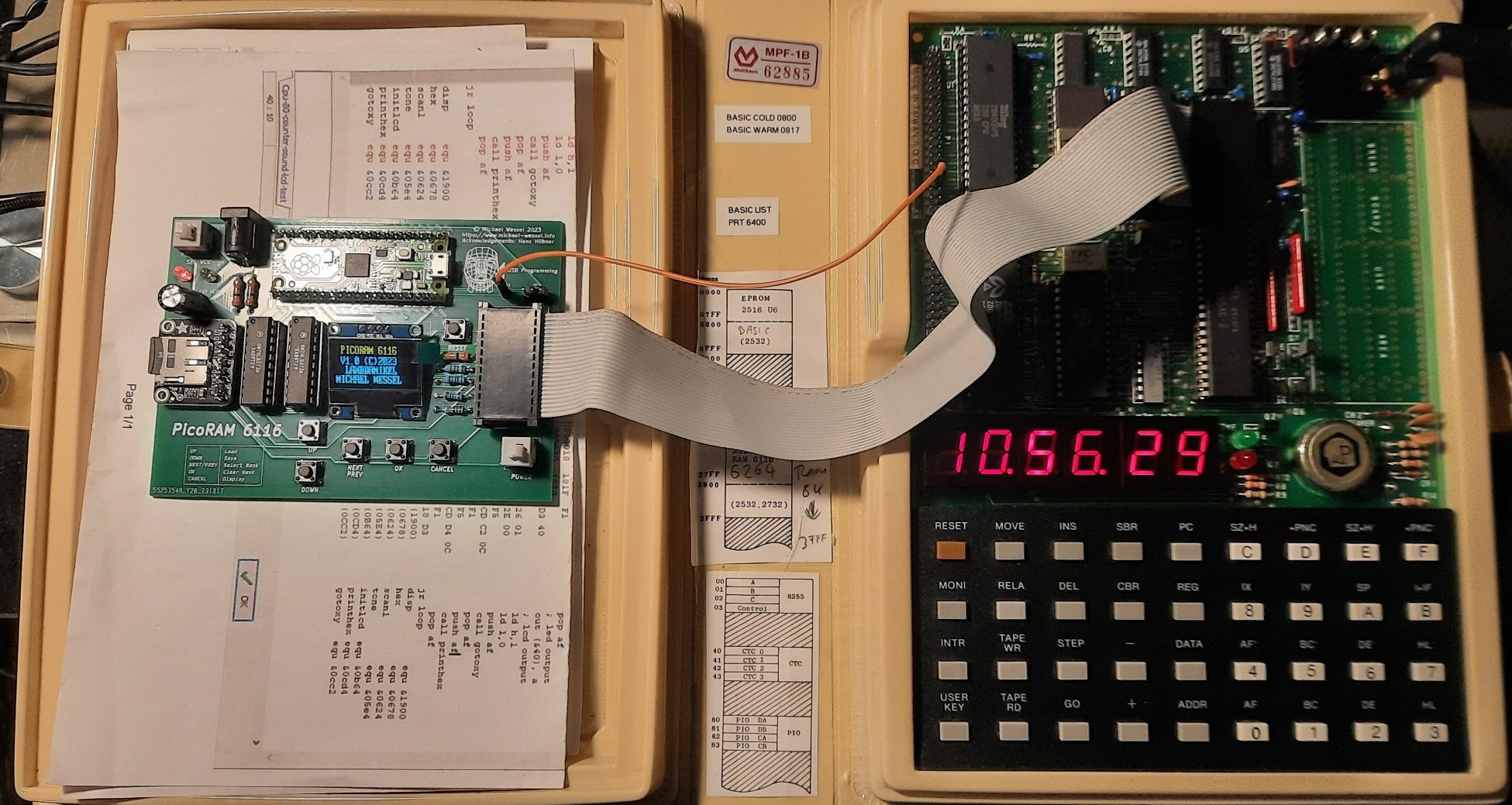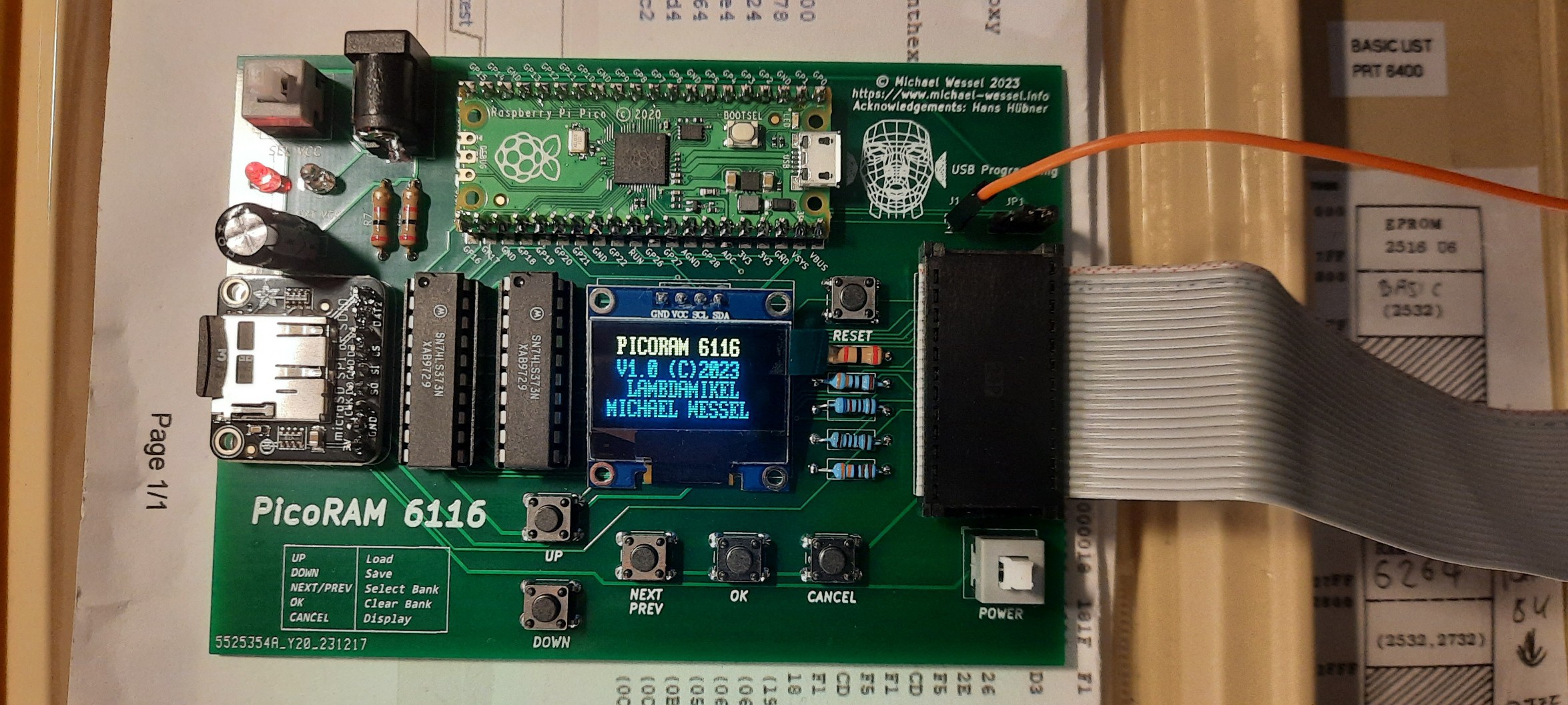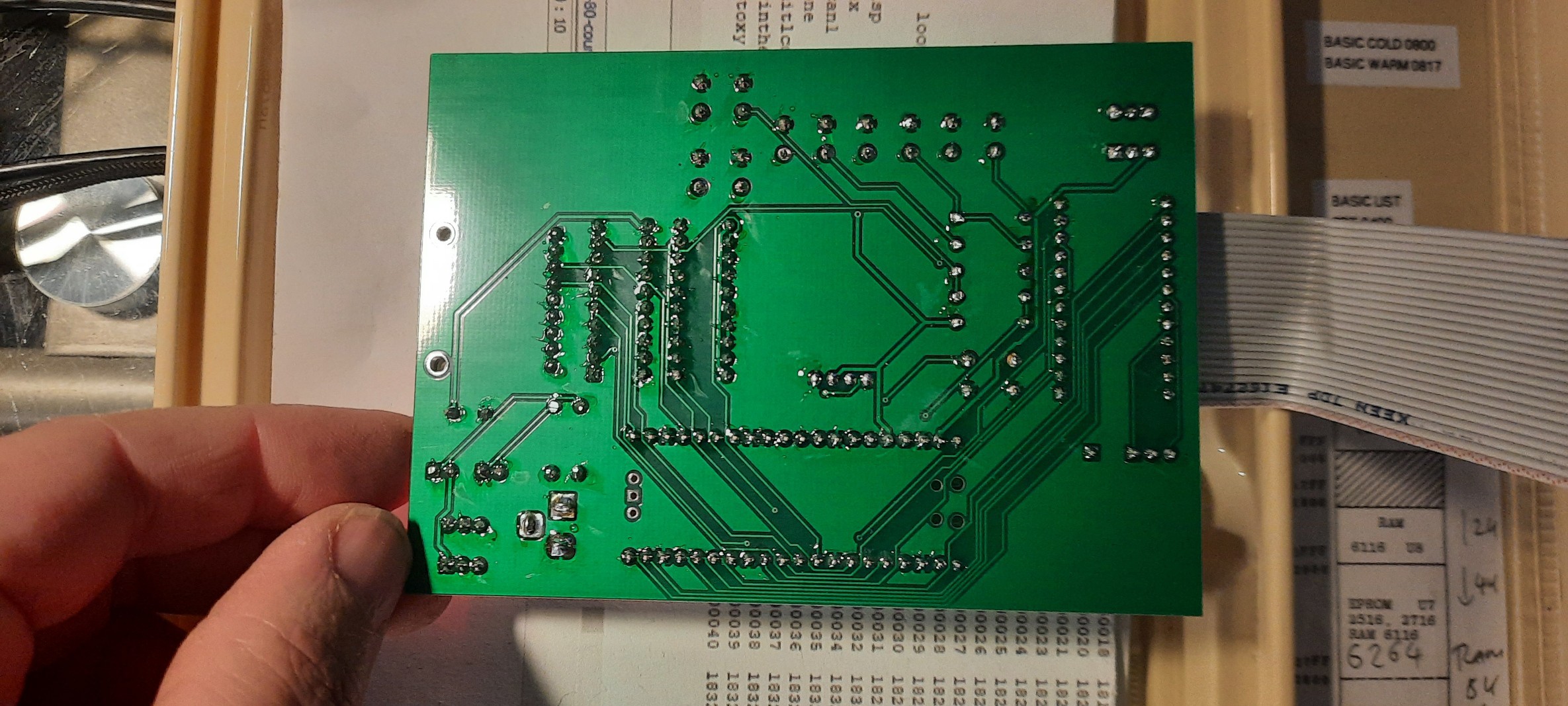-
New build and demo video by "Mein Elektronik Hobby" (in German)
10/17/2024 at 03:59 • 0 comments -
Using EPROM Images without EPROMS
07/08/2024 at 14:21 • 0 commentsThe U7 socket on the Microprofessor MPF-1 is usually occupied by a 2716 EPROM containing user programs (or Tiny BASIC). However, by cutting a few PCB traces and setting the J1 jumper accordingly, it can also accommodate an additional 2 KBs of memory, using a 2nd 6116 SRAM. Hence, PicoRAM 6116 can be used instead of a standard 2716 user EPROM in U7. I got a couple of programs in a 2716 EPROM BIN image from the user DISCMIX on the German Classic Computing (Vintage Computer) Forum. In this video we are running his programs via PicoRAM 6116, and I also demonstrate how to convert EPROM BIN images such as the ones I got from DISCMIX into a PicoRAM digestible HEX format.
-
John's MT-80Z Microprofessor variant with PicoRAM 6116
06/12/2024 at 16:12 • 0 commentsJohn W. added PicoRAM 6116 to his E&L MT-80Z MPF-1B clone and, after initial troubles, got it to work flawlessly. Very nice machine and progress - thanks for sharing, John! Good to know that PicoRAM 6116 also works well with the less common Microprofessor family members.
-
Using the MPF-1P Printer and PicoRAM 6116 simultaneously
04/13/2024 at 19:46 • 0 commentsLet's print out a solution for the Towers of Hanoi with 5 disks:
-
The Towers of Hanoi on the MPF-1P!
04/12/2024 at 17:53 • 0 comments -
Next-Level Software Development with PicoRAM 6116
02/26/2024 at 05:56 • 0 commentsPicoRAM 6116 is taking Microprofessor MPF-1B software development to the next level - instead of keying in hex codes with the monitor, use a comfortable state-of-the.art Z80 assembler on the PC or Mac, assemble / compile the HEX file there, put it on SD card, and feed it to the Microprofessor! In this video I am developing a "Towers of Hanoi" program for the MPF-1B (recursive version) using asm80.com:
-
Github repo available!
12/27/2023 at 17:08 • 0 comments -
Firmware v1.1 Release - "6116.INI File" Support
12/26/2023 at 22:42 • 0 commentsGiven the difference in ADC level configuration for the MPF-1P and MPF-1B, I decided to make these configurable. PicoRAM 6116 now reads the 6116.INI file on startup. The file specifies the machine type (MPF-1B or MPF-1P), ADC analog levels for the 5 buttons, 4 auto-load programs for the 4 banks which are loaded on startup, and one more flag (0 or 1) which can be used to debug / determine the voltage ADC levels for the analog buttons. If 1 is used, PicoRAM enters a "debugging loop" which constantly prints the ADC value on the display. The user can then press the buttons and note the values to be specified in the INI file for button configuration.
I am attaching two 6116.INI files to the files section of the project (one for the MPF-1B, one for the MPF-1P). These need to be renamed as 6116.INI.
This is the 6116.INI file for the MPF-1B - note that the file requires UNIX EOL (i.e., single LF EOL):
MPF-1B D00 C00 900 700 300 100 CLOCK.MPF DICE2.MPF COUNTER2.MPF EGGTIME.MPF 0
-
PicoRAM and the Microprofessor MPF-IP (One Plus)
12/25/2023 at 16:08 • 0 commentsTo my surprise, PicoRAM 6116 () worked almost out of the box on the faster (Z80A-driven) MPF-IP. The only thing I needed to adjust was the analog input for reading the UI buttons - VCC is much more noisy on the MPF-IP; I guess that's because of the VFD. Also, this is Rev. 4 now of the PCB - the little bodge wire pulls down the WAIT line of the Z80. I hence no longer have to hold the Microprofessor in RESET while operating the PicoRAM (or during boot / power cycle).
-
Final PCB revision assembled and confirmed working
12/24/2023 at 15:29 • 0 commentsThe final PCB just arrived - assembled, and tested. Looking good. I am now using the free GPIO (28) from the Pico to pull down the Microprofessor's WAIT line low. Previously, to power cycle the Microprofessor, I needed to hold down the Microprofessor's RESET button to prevent it from accessing the SRAM emulation before the Pico was up and running. Obviously, it takes a bit of time for the Pico to power up - by the time the SRAM emulation was up and running, the Microprofessor had already crashed if not held in RESET otherwise. Now, upon power cycle / reset, I am pulling down WAIT and it is released when the SRAM emulation is up and running. This allows me to power cycle and reset without having to hold down the Microprofessor's RESET button. The WAIT line is on Pin 37 of the Microprofessor expansion pin header.
The firmware might still get tweaked and improved here and there, but the hardware part of this project is done. I am satisfied with the current revision - of course, it's not perfect, but what is?![]()
![]()
![]()
PicoRAM 6116 - SRAM Emulator & SD Card Interface
Give your Microprofessor MPF-1B (and other machines) a versatile SD card interface - no more cassettes!
 Michael Wessel
Michael Wessel

